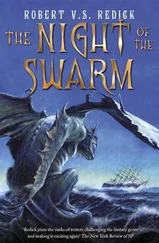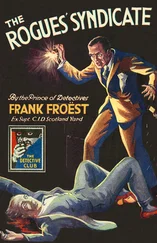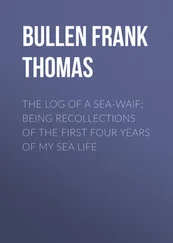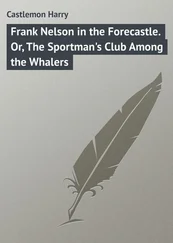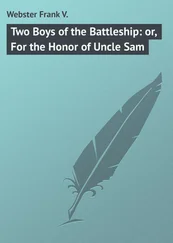The shelf regions, however, had long been conquered by mankind. Humans were land animals, but needed water to survive, which was why two-thirds of the world's population could be found within sixty kilometres of the shore.
While oceanographic charts showed the shelf around Portugal and northern Spain as a narrow strip of seabed, the perimeter of the British Isles and Scandinavia extended into the water for some distance, so that the two regions merged together to form the North Sea, a relatively shallow expanse of water that averaged between twenty and 150 metres in depth. In its present form it dated back barely ten thousand years, and at first glance there was nothing remarkable about it, with its complex currents and fluctuating water temperatures. In the world economy, though, it played a central role. The North Sea was one of the busiest areas in the world, lined by industrial nations, and home to Rotterdam, the biggest port in history. Although the English Channel was only thirty kilometres wide at its narrowest point, it was one of the world's most travelled waterways: freighters, tankers, ferries and smaller craft jostled for space within its narrow confines.
Three hundred million years ago, vast swamps connected Britain to the continent in an unbroken chain of land. From time to time the area flooded as the waters advanced, then retreated. Gradually, mighty rivers swept into the basin, laying down mud, plant and animal remains that built up into a deposit many hundreds of metres thick. Seams of coal formed, while the land continued to sink. New deposits accumulated, compacting the sediment into sandstone and lime, and trapping organic debris underground. At the same time the temperature in the rock rose. Exposed to the combined effects of heat and pressure, the organic matter underwent complex chemical changes, eventually forming oil and gas, some of which leached out of the porous rock and permeated upwards into the water. The rest remained buried.
For millions of years the shelf had lain untouched.
Then oil was discovered, and Norway joined Britain, Holland and Denmark in a race to exploit the underwater riches. In thirty years, it had become the world's second largest exporter of petroleum. The Norwegian continental shelf contained the bulk of the deposits – roughly half of Europe's oil reserves – and its store of natural gas was equally impressive. The drilling extended ever deeper, and simple scaffold constructions gave way to oil platforms the size of the Empire State Building. It wasn't long before plans to build autonomous subsea processors became reality. It seemed as though the party would last forever.
However, as fishing yields declined, so did the supply of petroleum. Many subsea oil fields had already been drained, and Europe was faced with the spectre of an enormous scrapyard full of disused platforms. There was only one way out of the plight that the oil nations had brought upon themselves. On the other side of the continental shelf untapped reserves of petroleum were stored beneath the surface of the deep-sea basins and in the continental slopes. Conventional platforms were useless in such conditions, so Lund and her team were developing a different kind of technology. The continental slope wasn't uniformly steep, and in places it sloped down to form terraces – the ideal terrain for a subsea facility. The risks involved in working at depth meant that human labour had to be avoided. With the fall in oil production, the oil workers' fortunes had waned. In the 1970s and 1980s they had been well paid and in demand, but now there were plans to reduce the workforce on Gullfaks C to two dozen. Even an enormous construction like the Troll A platform practically ran itself.
The fact of the matter was that the North Sea oil industry was no longer profitable. But closing it down would be even more costly.
JOHANSON EMERGED FROM HIS CABIN. The atmosphere on board the Thorvaldson was one of quiet routine. The boat wasn't especially big. Some of the giant research vessels, like the Polarstern from Bremerhaven, had space for helicopters to land on board, but the Thorvaldson needed every spare metre for equipment. He strolled over to the railings and gazed out to sea. They had been sailing for almost two hours, passing through conurbations of platforms and oil rigs. Now they were north of the Shetland Islands, beyond the continental shelf, and the view had opened out. Nearly seven hundred metres of water lay between the seabed and the ship's keel. The continental slope had been charted and surveyed, but the zone of eternal darkness still retained its mystery. Powerful floodlights enabled scientists to illuminate small sections, but it was like exploring an entire country by night with a streetlamp.
Johanson remembered the bottle of Bordeaux and the French and Italian cheeses in his suitcase. He went to look for Lund and found her conducting a pre-dive check on the robot. The three-metre-high open-sided box was suspended from the hydraulic boom. The outer casing of its lid bore the name 'Victor'. Cameras and an articulated arm were mounted on the front.
Lund beamed at him. 'Impressed?'
Johanson dutifully looped back around Victor .
'It's a great big yellow vacuum cleaner,' he said.
'Spoilsport.'
'How much does it weigh?'
'Four tonnes. Hey Jean!' A thin man with red hair peered out from behind a cable drum. Lund beckoned him over. Jean-Jacques Alban is first officer. He keeps the Thorvaldson afloat,' said Lund. Jean, I've got stuff to get on with. You'll look after Sigur for me, won't you?' She hurried off. The two men watched her go.
'I expect you've got more important things to do than explain Victor to me,' said Johanson.
'Oh, it's no problem. You're from the NTNU, right? I gather you've been examining the worms.'
'Why's Statoil so interested in them?'
Alban made a dismissive gesture. 'It's the characteristics of the slope that we care about, really. We found the worms by accident. I reckon the problem's all in Tina's mind.'
'But isn't that why you're here? I mean because of the worms,' said Johanson, surprised.
'Is that what she told you?' Alban shook his head. 'No, that's only part of the mission. We'll follow it up, of course, as we always do, but our main task is to clear the way for an underwater monitoring station. The idea is to build it on top of the oilfield, so if the site seems safe, we can install a subsea unit.'
'Tina mentioned something about a SWOP.'
Alban looked at him uneasily. 'Er, no. As far as I'm aware, the subsea processor is a done deal. I don't think there's been a change of plan.'
So, no floating platforms, then. Johanson decided to quiz him about the robot.
'It's a Victor 6000, a remotely operated vehicle, or ROV,' Alban explained. 'It's got a working depth of six thousand metres and can stay under water for days at a time. We guide its movements from the boat – a cable leading up to the control room delivers its data simultaneously. The next trip is a forty-eight-hour recce. We'll get it to fetch you a handful of worms – Statoil prides itself on preserving biodiversity.' He paused. 'What do you make of the creatures?'
'It's too early to say,' said Johanson.
There was a clunk and Johanson watched as the boom hoisted Victor off the deck.
'Follow me,' said Alban. They headed amidships towards five shed-sized containers. 'Most vessels aren't equipped for using Victor, but since we could accommodate it, we borrowed it from the Polarstern ?
'What's in the containers?'
'The hydraulic unit for the winch, plus some other bits of machinery. The one at the front is home to the ROV control room. Mind your head.'
They stepped through a low door. Inside, over half of the space was taken up by the control panel and twin banks of screens. Some were switched off, but the rest showed navigational data and operational feedback from the ROV. A group of men sat with Lund at the consoles.
Читать дальше


